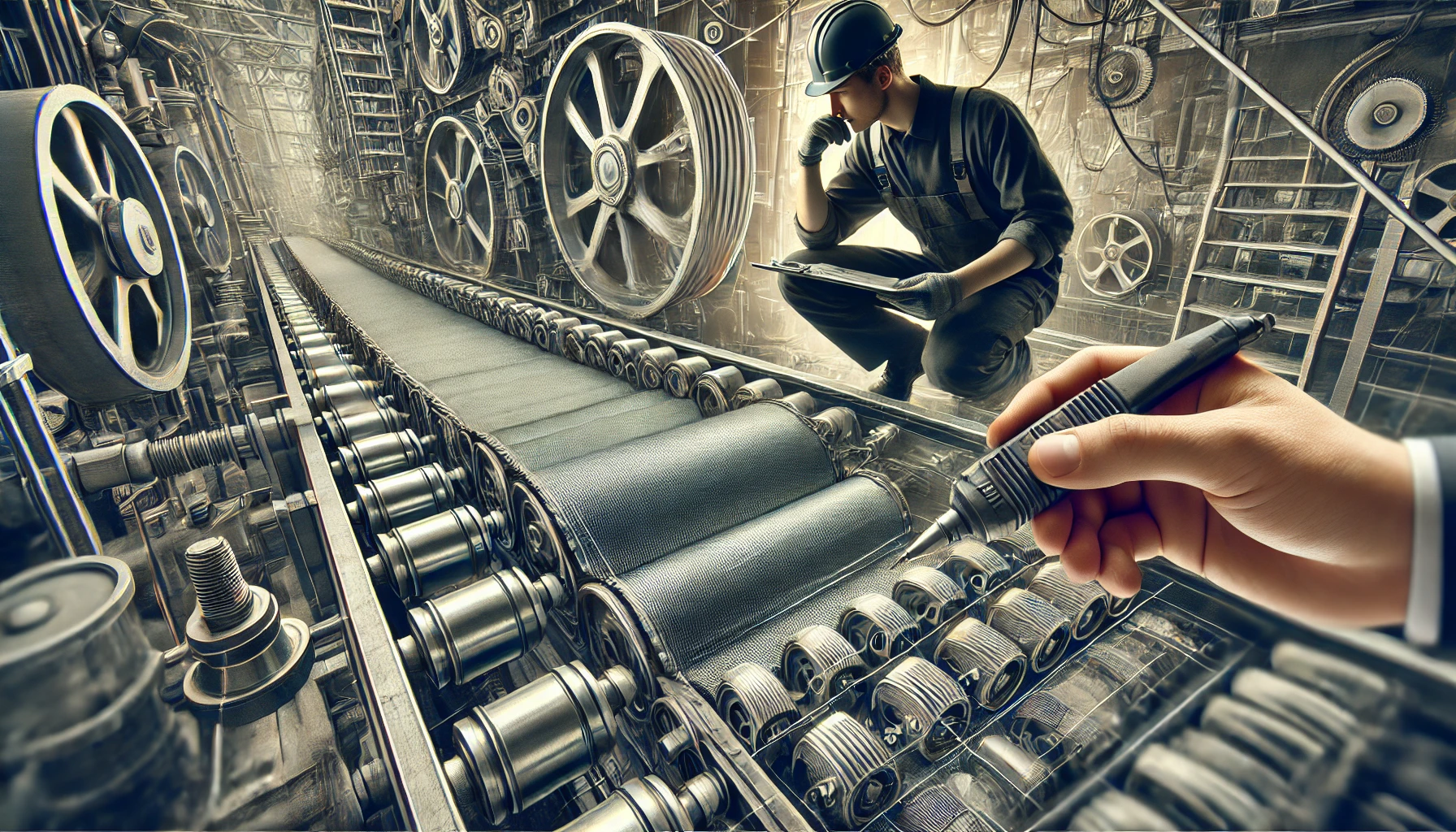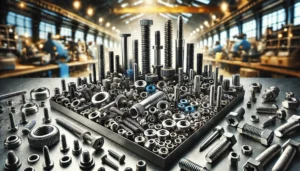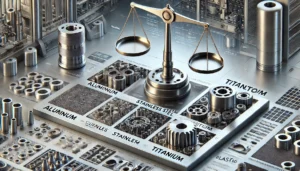Industrial belts are used in conveyor systems which perform these operations for businesses dealing with the movement of goods in different industries. In warehouses or manufacturing plants, industrial belts can facilitate bulk goods movement thus guaranteeing optimum productivity, maximum efficiency, and the proper functioning of machines within the organization. This excerpt explains how conveyor systems efficiency is bolstered by industrial belts, and why it is paramount to have the correct belts used in the specific tasks.
2. Functionality of Industrial Belts in Conveyor Systems
Industrial belts are crafted with specific consideration to their capability to carry out power transfer between pulleys and the conveying of material from one location to another. Within a conveyor system, the belts are the most important components responsible for the transportation of materials, products, or parts. Such belts are meant to be more economically efficient by minimizing the requirement of human interaction and increasing the safety of the workplace. Conveyor belts are extensively utilized in the mining, manufacturing, food processing, and logistics industries to ensure the rapid movement of products across various stages of processing.
2. Different kinds of Industrial Belts and Their Uses
Industrial belts are classified into different types depending on the tasks and environment they are serving. Different types of belts serve different purposes and are selected for specific requirements in order to get the best results in a conveyor system.
- V- belts: V- belts have a high rate of usage for power transfer and torque applications as they have a very high ratio of power to size. Their trapezoidal shape enables them to be wedged into the grooves of the V-guided pulley while providing excellent grip which eliminates the chances of slippage. They are mostly used in mechanical applications like pumps, compressors, and conveyor drives.
- Flat Belts: Flat belts are formed into a continuous ring with some flexible material to ease loading and unloading onto the pulleys. They are best suited for high speed applications where control of noise and smoothness of the material being handled is a top priority. Industries like textiles, automotive, and food processing all make use of flat belts.
- Timing Belts: Timing belts, also known as toothed belts, can be identified by their teeth that catch in the corresponding grooves around the pulleys. This guarantees tightening of all components as well as complete control with no slippage. Timing belts are extensively used in industries where movement of components are integral as in automotive engines, robots, and packaging systems.
- Conveyor belts: A highly valuable piece of equipment designed to move materials in a production setting. There are different types of conveyor belts, for instance, roller bed, flat, modular, and even steel. The selection of a specific type always depends on the material to be transported and on the working environment. They are useful for heavy-duty bulk transport and light-duty goods movement in retail stores or warehouses.
3. Maximizing Productivity with Correct Conveyor Belt Selection
Selecting the right industrial belt is crucial in achieving the maximum productivity out of the conveyor system. For maximum efficiency, a belt must be selected that meets the specific requirements of the system for example, the material to be transported, the speed at which it is to be moved, and the load to be carried. Employing the wrong belt type increases the chances of slippage, two premature wear and breakdowns resulting in loss of precious operational and maintenance time.
It is a common misconception, for example, that using a flat belt for high torque applications may result in poor power transmission. At the same time, using a V-belt in a high speed lightweight application may cause unneeded damage. Proper assessment of operational parameters and belt selection allows companies to target the effectiveness of their conveyors.
4. Effect on Productivity and Safety
The implementation of industrial belts in conveyor systems will improve productivity by automating the movement of materials. With the proper belt selection, industries can achieve continuous operations with little to no human intervention which minimizes labor costs and chances of making mistakes. Moreover, conveyors greatly improve operational workflows by transferring materials at predetermined speeds that are ideal for the processing of sorting, packaging, or assembly.
While productivity is important, safety is equally important. Beyond improving productivity, Industrial belts contribute to safety by eliminating manual lifting and handling that can lead to workplace injuries. In addition, safety measures with new age design such as guards on conveyor belts are used to stop moving parts that may cause accidents due to the equipment not working properly. Well-designed conveyor systems also help minimize the chances of spills and the overturning of materials which may lead to accidents caused by incorrect handling of materials.
5. Longevity and Maintenance
Regularly scheduled maintenance is crucial for a wide array of industrial belts since it makes certain that everything is working as efficiently as possible and that there is zero loss of damage. Wear and tear is a common part of conveyor belts life cycle, so constant inspection is vital to ensuring that there is no friction damage which leads to breakdowns. Important key maintenance practices that are used are checking signs of wear and tear, using proper tensioning, and lubricating moving parts to make sure that there is reduced friction.
Regular inspections assists in noticing fraying, stretching, cracking, and any other forms of new damage that makes timely replacement easy. Adapting proactive maintenance helps a business save costs from paying for down time and ensuring that their conveyor systems last longer. Moreover, when comparing poorly and properly maintained systems, the ones in proper condition work with zero energy loss and greatly reduces operational cost burdens which enhances overall systems lifetime in the long run.
6. Advancements in Technology
Thanks to the efficiency of modern technology, turning industrial belts durable and environmentally friendly is a walk in the park these days. Improved materials such as polyurethane, synthetic rubber and thermoplastic elastomers result in increasing purposes belts tend to serve such as greater resistance to chemicals, heat and so on. Considering the advancing advancement in food processing, pharmaceutical and chemical manufacturing, it is understandable why certain properties of the materials are needed.
The integration of advanced technology into conveyor systems is one of its greatest milestones. Now, the operators have the ability to track the conditions of the conveyor systems in real-time with the help of sensors, which monitor the equipment thoroughly. This helps combat the issue of losing a conveyor system failing downtime and helps to fix issues before they escalate. This enables the predicted technology which helps one work and plan ahead rather than after the event has occurred.
7. Environmental Considerations
Sustainability does not only reek of energy consumption, but goes beyond that. The world today is rapidly changing in pace and efficiency, as belts are being designed to not only be more powerful, but also be more eco-friendly. As sustainability norms increase, manufacturing companies are focusing on using more recycled materials when making belts to reduce waste. With companies focusing more towards being energy efficient, the use of energy saving belts is also on the rise. These help put forth a company’s lower operational costs and minimize carbon emissions.
The negative impacts of conveyor systems on the environment are not limited to just the production process. With construction, no materials need to be spilled, aiding in the negation of the need for excessive handling time and minimizing the impact on the environment. In turn, industrial belts make the production and ongoing processes more efficient, which goes towards the more sustainable practices in manufacturing and distribution.
8. Conclusion
Belt conveyors are an important achievement in the development and production processes of conveyors for different industries applications. Selecting the right belt type with regards to the specific industry requirements will facilitate handling operations, cut down on the cost of running the operations and improve the level of safety. New technologies and systematic care have continually improved the specifications and life of conveyor belts, thereby entrenched them as a critical element to industrial activities.
An appropriate industrial belt enhances the safety, sustainability, and ergonomics of the workplace in addition to the effective and efficient movement of materials. As the industry evolves, so too will the importance of industrial belts in maintaining maximum efficiency in conveyor systems for increased productivity and environmental compliance.










